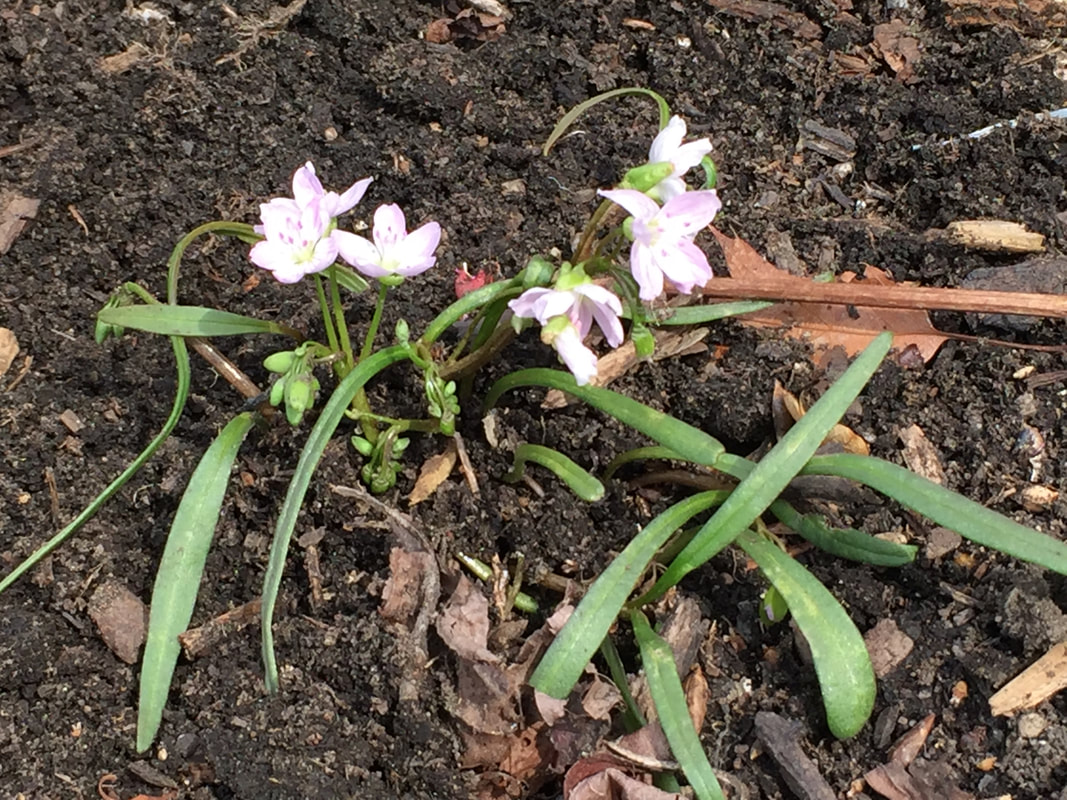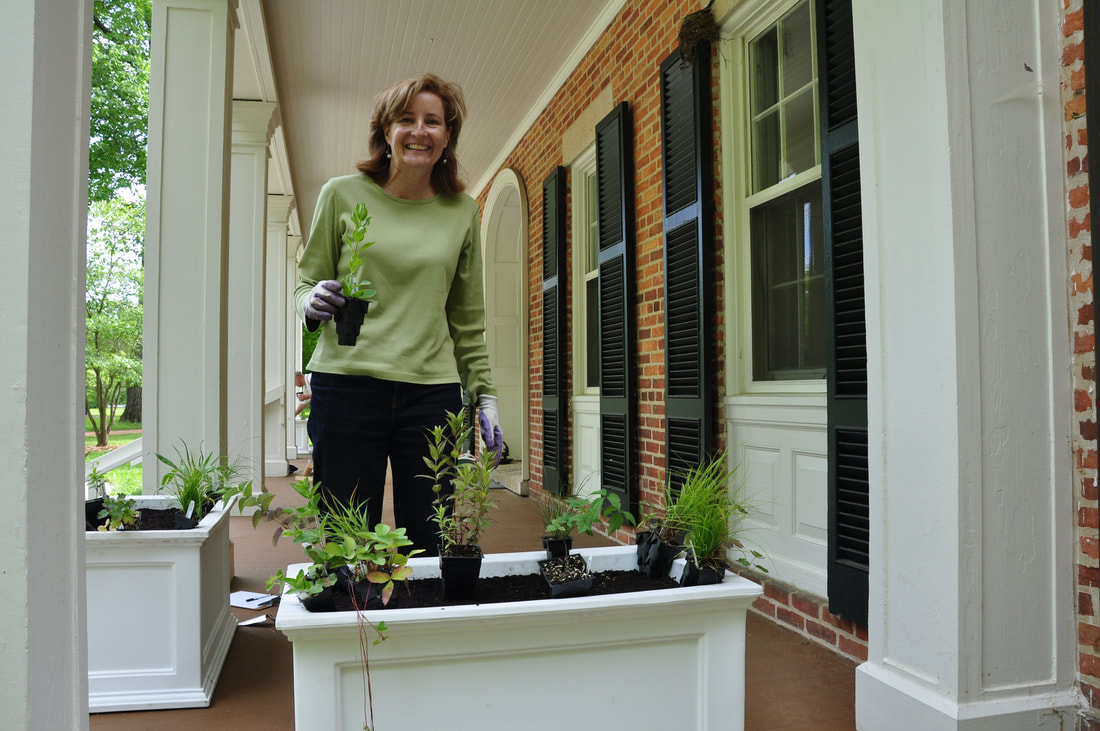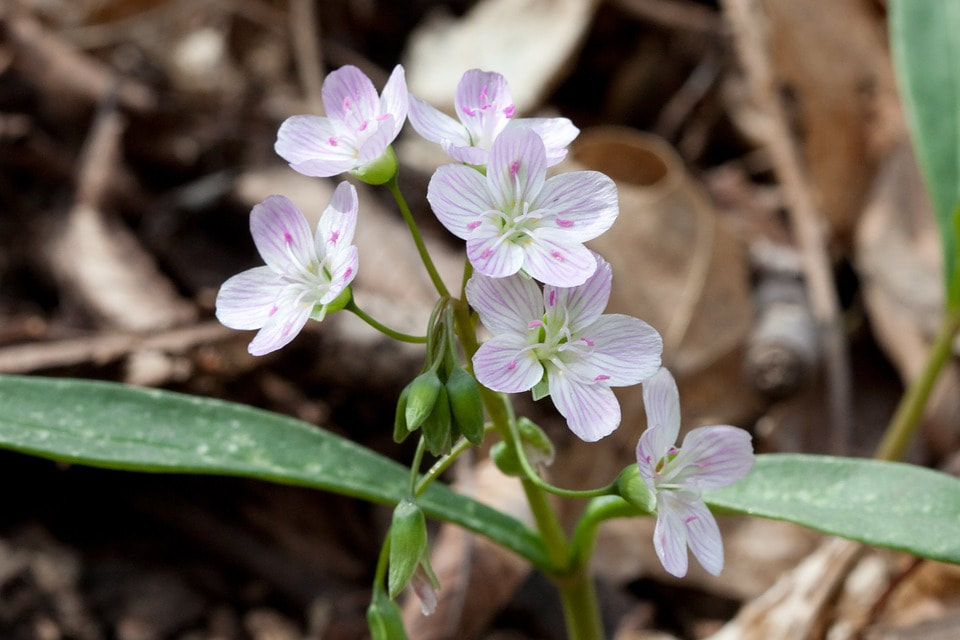|
Nestled up to the protective base of one of our Tardiva Hydrangeas, a Spring Beauty (Claytonia virginica) has appeared for the first time in the courtyard bed of our native gardens. None have appeared yet anywhere else in our beds and the nearest ones are tens of yards away; the Brushwood WildBunch didn’t plant it, so how did it get there? The circle in front of Brushwood Center erupted in Spring Beauties in the last couple of days, literally carpeting the lawn there. And in the woods surrounding Brushwood, these first bloomers of the year are dotted here and there along with Sharp-Lobed Hepatica, Bloodroot, newly launched umbrellas of Mayapple leaves and the spotted tongue-like leaves of Trout Lily yet to bloom. But these areas are yards and yards away from our native garden beds - how did this one, lonely individual Spring Beauty plant come to be in our garden? This question sends me to my books and, of course, Google! On the Lake Forest College website I find: “Claytonia virginica plays a noble role in its natural ecosystem. In order to effectively reseed, Spring beauty subjects itself primarily as a source of food. As mentioned before, insects such as bees and flies frequently visit the flowers seeking nectar and pollen. Small rodents dig up and eat the corms or a system of roots that grow like potato tubers. And as for the foliage, it occasionally becomes a food source for White-Tailed Deer. Spring Beauty acts as a sign that spring has arrived and the woods are filled with diverse wildflowers.” While seeds may attach to and be spread by the bees and flies, and I’ve certainly seen many ground-nesting native bees around our garden, I find another method of seed dispersal in my brand new copy of the recently published Flora of the Chicago Region by Gerould Wilhelm & Laura Rericha. It informs me that “The seeds are ant-dispersed, as they possess a minute, white-fleshy elaiosome that is embedded within a shallow notch or divot on the seed’s margin. After flowering, the pedicels nod and nearly touch the soil, a behavior that perhaps increases the likelihood of the seeds being collected and dispersed by ants.” From the source of all true knowledge, Wikipedia, I find out that “Elaiosomes (Greek élaion "oil" and sóma "body") are fleshy structures that are attached to the seeds of many plant species. The elaiosome is rich in lipids and proteins, and may be variously shaped. Many plants have elaiosomes that attract ants, which take the seed to their nest and feed the elaiosome to their larvae. After the larvae have consumed the elaiosome, the ants take the seed to their waste disposal area, which is rich in nutrients from the ant frass and dead bodies, where the seeds germinate. This type of seed dispersal is termed myrmecochory from the Greek "ant" (myrmex) and "dispersal" (kore). This type of symbiotic relationship appears to be mutualistic, more specifically dispersive mutualism according to Ricklefs, R.E. (2001), as the plant benefits because its seeds are dispersed to favorable germination sites, and also because it is planted (carried underground) by the ants.”
I suspect that the ants I’ve seen – and on occasion been bitten by! – are the culprits in bringing this wonderful new addition to our native gardens. Leigh Stewart is president of Brushwood Center's volunteer garden club, the Brushwood WildBunch.
0 Comments
Leave a Reply. |
AuthorThis blog is written by the staff and partners of Brushwood Center at Ryerson Woods Archives
February 2022
Categories |
|
21850 N. Riverwoods Rd.
Riverwoods, IL 60015 224.633.2424 [email protected] ABOUT BRUSHWOOD BECOME A PARTNER VOLUNTEER AND JOB OPPORTUNITIES |
Brushwood Center at Ryerson Woods is committed to enabling the participation and enjoyment of our programming and events for all visitors. At Brushwood Center, you will have open access to accessible parking and entrance to the house, a gender neutral bathroom, and changing tables.
If you require certain accommodations in order to observe or attend our events, or have questions regarding accessibility of our facilities, please contact our Director of Public Programs and Music, Parker Nelson, at [email protected] or at (224) 633-2424 ext. 1. Programming and events at Brushwood Center are available to everyone, including but not limited to age, disability, gender, marital status, national origin, race, religion, and sexual orientation. Site Photography by: In Life Photography, Michael Kardas Photography, Ewa Pasek Photography, Brushwood Staff, and Josiah Shaw Productions |
OPEN TO THE PUBLIC Monday - Thursday & Saturday: 10am - 3pm Sunday: 1pm - 3pm and by appointment |



 RSS Feed
RSS Feed
